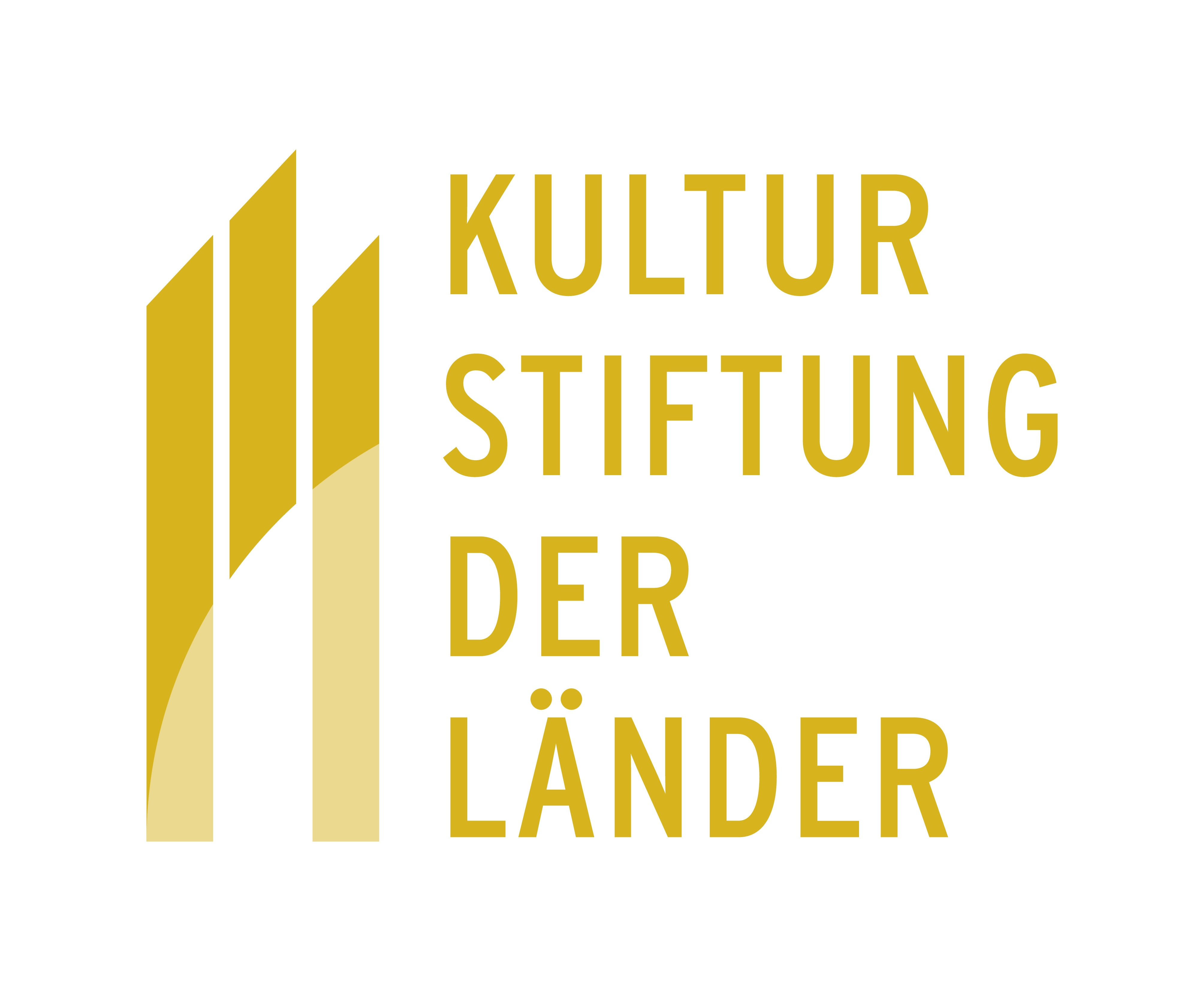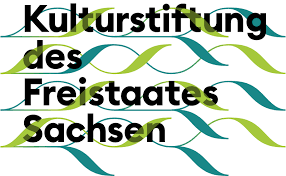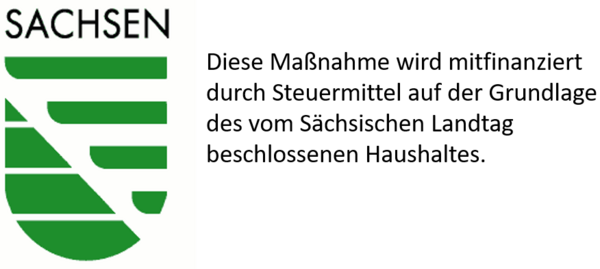Clear the Stage for Johann Sebastian Bach
Special exhibition in 3 acts to mark the 300th anniversary of Bach's inauguration in Leipzig
A new chapter in music history began in 1723: Johann Sebastian Bach was elected St Thomas' Cantor in Leipzig. In 27 years, he created a unique oeuvre that is now part of the world cultural heritage of mankind. From St Thomas' Churchyard, his works began their triumphal march around the globe. But what is the secret of Bach's music? What is its special quality and innovation? And why was his move to Leipzig so decisive for his compositional output? The anniversary exhibition sets the stage for Bach's inexhaustible art in three acts - to see, hear and playfully discover.
21 March till 9 July 2023
As soon as he arrived in Leipzig, Bach devoted all his energy to church music. In just a few years, he created an impressive oeuvre of cantatas - around 60 compositions a year. He also composed works such as the Magnificat, St John Passion and St Matthew Passion. The devout Protestant staged biblical words and chorales in an artistic and expressive manner. How important these cornerstones of sacred vocal music were to him is exemplified by his meticulous fair copy of the St Matthew Passion: he emphasised the biblical words and chorales in red ink. His special way of setting four-part chorales even became conceptually influential: they are simply called Bach chorales. For the arias and recitatives based on free verse, he invented an almost unbelievable number of individual and always surprising solutions.
The great care with which Johann Sebastian Bach devoted himself to each individual composition is rooted in this belief. His outstanding artistry is evident in a simple organ chorale as well as in the St Matthew Passion, in which he pushed the boundaries of what was possible. At the same time, his faith in no way restricted him artistically. His musical language always testifies to his great curiosity, openness to change and ability to integrate.
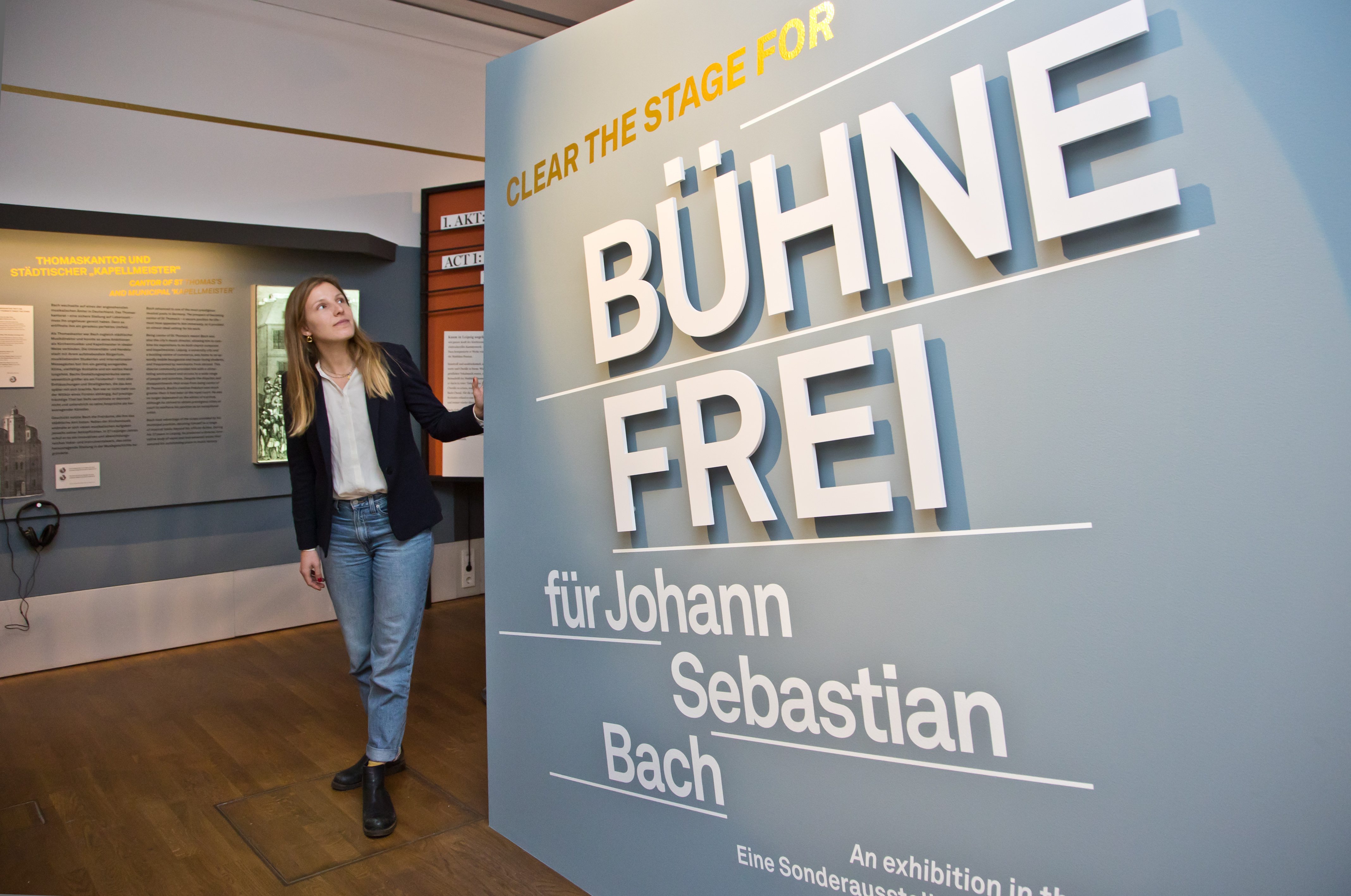
Bach's inventiveness and originality were already recognised by his contemporaries. The fascinating effect of his compositions remains unbroken to this day. His church cantatas, oratorios and passions have a universal character and touch people regardless of their origin and background. Bach's sacred vocal music is at the centre of the first act of the anniversary exhibition.
22 July till 5 November 2023
Bach was determined to push the boundaries of musical expression. A hallmark of his personal style was ‘elaboratio’ – the complete mastery of musical material. This concept is explored in Act 2 using Bach’s groundbreaking collections of keyboard music.
The second act of the exhibition series follows Johann Sebastian Bach "In Search of Perfection". With many sound recordings, 3D audio games, interactive stations, precious printed music and works of visual art, the exhibition takes you into the secrets of his keyboard music works.
It was in Leipzig that Bach first systematically published compositions for clavier, organ and other instruments. He created trend-setting collections in all genres and styles: the Clavier-Übung Part 1-4, the Wohltemperiertes Klavier Part 2, the Musikalisches Opfer or the Kunst der Fuge. Always in search of perfection, he comprehensively elaborated musical ideas and explored their compositional potential. In doing so, he shaped them to the greatest possible fullness of voice and guided them through the "most hidden secrets of harmony", as his pupil Johann Friedrich Agricola put it. In this way, Bach created immortal works of groundbreaking musical inventiveness and unique richness of design.
Goldberg Variations at the Centre
The second part of the anniversary exhibition focuses on Bach's Goldberg Variations. A multi-faceted interactive station allows visitors to delve deeply into Bach's artistic cycle: to follow his compositional style, to compare interpretations and to learn anecdotal information about the creation of the work and interesting facts about its treatment in literature.
The Goldberg Variations are also illuminated by works of visual art. The 30-part series of paintings Goldberg Variations (2011-2015) by the Dutch artist Elisabeth Müller (born 1946 in Meppel) will be on view for the first time in Germany. In the tradition of Dutch Constructivism, her works are characterised by a richly varied play with geometric figures. Bach's piano works are an inexhaustible source of inspiration for the artist and active musician. For the opening of the exhibition, she is donating two works on Bach's Goldberg Variations to the Bach Archive: "Six paper models on sixteen planes" (2014) and "Sixteen paper models on sixteen paper bases" (2015). Both works can be seen in the exhibition.
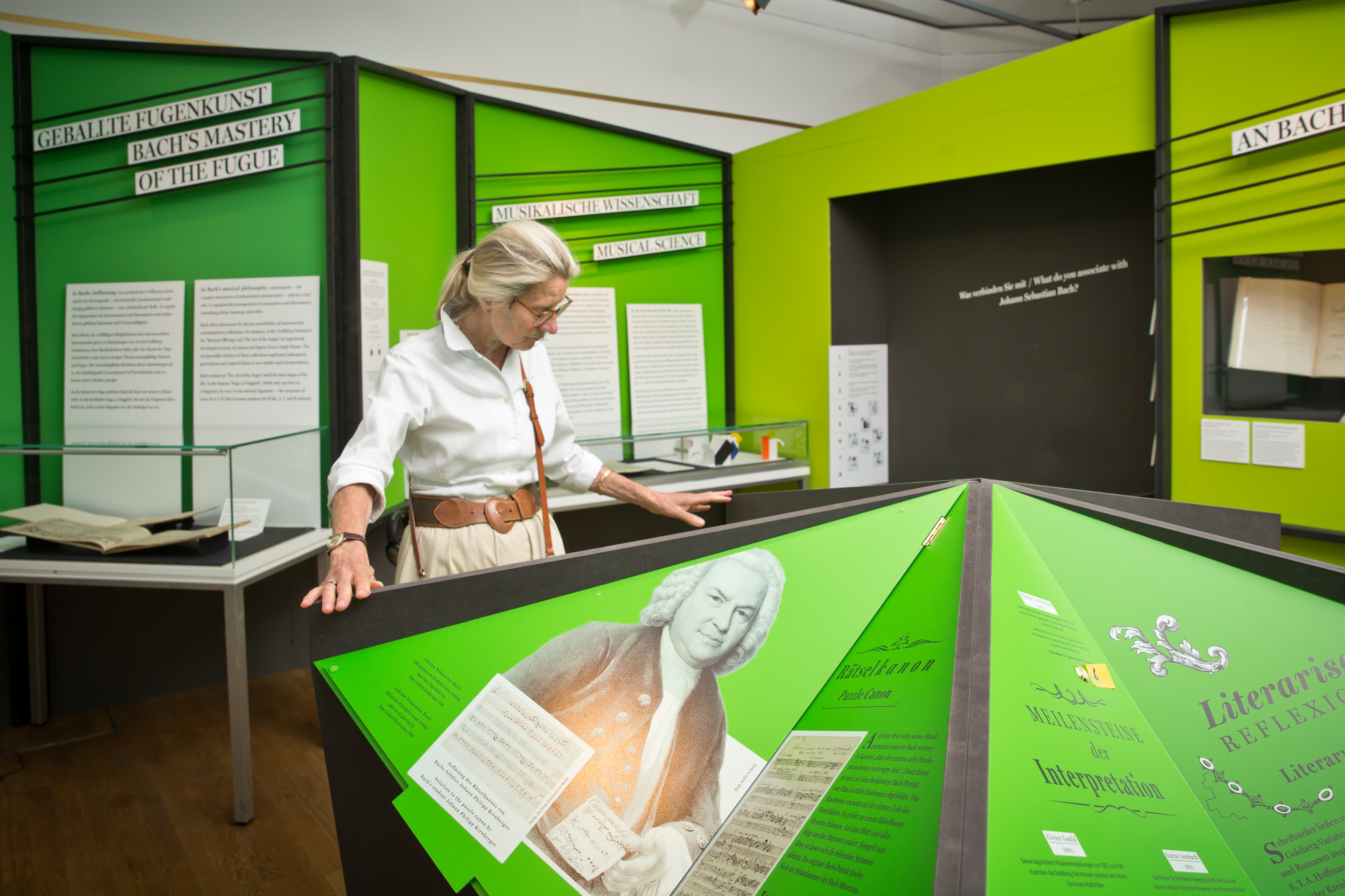
16 November 2023 till 24 March 2024
»Strong full voices«, »Secrets of harmony«, »Manifold rhythm«, »In a single voice« and »Inventive thoughts« are the titles of the chapters in the final act of the exhibition. The exhibition presents these five characteristic features of Bach's compositional art and uses selected examples to show how they spurred on subsequent generations to explore and explore new ways of composing. On display are manuscripts by Gustav Mahler and Max Reger, first editions of works by Felix Mendelssohn Bartholdy, the first Bach biography by Johann Nikolaus Forkel and much more. The screen print series »Hommage à Johann Sebastian Bach« by Spanish artist Eduardo Chillida impressively shows how Johann Sebastian Bach inspired art across all genres.
Many pop stars were inspired by Bach's music. A central interactive station makes it possible to experience which Bach works the Beatles, Sting and Lady Gaga drew on and how they used them in their hits. Museum visitors can also draw up their own Bach charts or assign pieces of music inspired by Bach to their countries of origin on a world map.
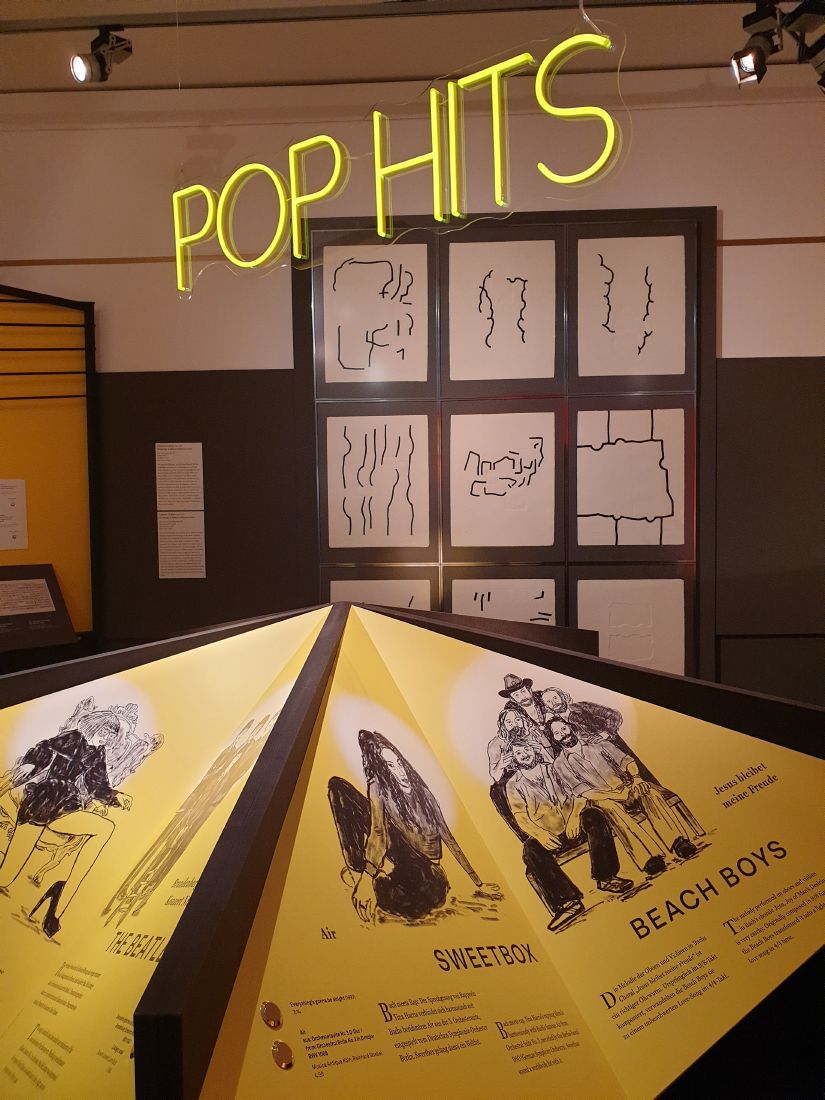
Strong full voices
Ludwig van Beethoven found models in Bach's compositions for processing musical themes and dealing with harmony: his »Grosse Fuge« op. 133 - a highly unconventional work for string quartet - was significantly influenced by Bach's cycle »The Art of Fugue«. Felix Mendelssohn Bartholdy, on the other hand, was inspired by Bach's music to revitalise church music in the 19th century. Bach's influence can be felt in many of his oratorios, choral and organ works. Through his performances, he also brought Bach's oratorios to the attention of the public.
Numerous composers expressed their admiration for Bach through arrangements, including Johannes Brahms, Franz Liszt, Camille Saint-Saëns, Ferrucio Busoni, Max Reger, Percy Grainger, Sergei Rachmaninov, Bela Bartók and Myra Hess. The representatives of the »Second Viennese School« — Arnold Schönberg and his pupil Anton Webern — used Bach's counterpoint as inspiration for their own compositional style, the twelve-tone technique. They wanted to make the complex structures of Bach's works comprehensible: »to awaken what still sleeps here in the concealment of this abstract representation by Bach himself and for almost all people ... is not there at all or at least completely incomprehensible.« (Quote: Anton Webern)
Secrets of the harmonies
Bach's colourfully harmonised chorales and his art of enriching chords and melodies with tones from other keys were pioneering. Alban Berg congenially fused Bach's famous chorale »Es ist genug« (BWV 60) with the twelve-tone technique in his violin concerto. It is hard to overestimate the influence that Bach's Well-Tempered Clavier had on subsequent generations: it became a timeless teaching work and inspired Frédéric Chopin, Paul Hindemith and Dmitri Shostakovich, among others, to compose their own cycles of works.
The most varied rhythm
Rhythm and metre play an important role in Bach's music. His preference for combining regular metres with opposing accents or rhythms is reminiscent of jazz. It is no wonder that famous representatives of the genre such as Jacques Loussier, Bobby McFerrin and Till Brönner have discovered Bach's music for themselves.
In a single voice
In his solo works, Bach succeeded in realising the full richness of his art on a single melodic instrument. Where double stops and bowing technique reached their limits, Bach skilfully indicated the most elaborate voices and harmonies so that they unfolded their multifaceted sound fabric in the listener's imagination. These masterpieces initially seemed unfamiliar to 19th century concert audiences. Robert Schumann therefore created piano accompaniments to the six sonatas and partitas for solo violin. Ferrucio Busoni transformed the famous Chaconne from the Partita in D minor into an opulent piano work. Camille Saint-Saëns arranged the Gavotte from the Partita in E minor for piano. But no arrangement can compete with the original.
Inventive thoughts
Bach's inventiveness was outstanding: he gave the most elaborate fugues and canons the greatest depth of expression.He imaginatively transformed chorales into cantatas and chorale preludes.The wealth of variations in his preludes and fugues, variations, suites, concertos, arias and choruses is almost inexhaustible.The way Bach explored the processing of musical material in all directions had an incomparably inspiring effect on later composers. Felix Mendelssohn Bartholdy followed on from Johann Sebastian Bach and founded a new era of organ music: in his Six Sonatas op. 65, he further developed techniques of fugue and chorale writing and created the type of Romantic organ sonata.
You can find all the titles that will be performed in our anniversary exhibition in this Playlist.
We would like to thank our supporters:

